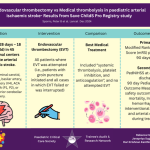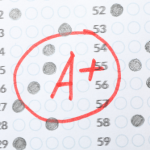Question of the Day
What is the antidote for acute tylenol toxicity?
Corey Fedie, CEO of Ritzville, Wash.-based East Adams Rural Healthcare, was terminated during an Oct. 22 board of commissioners meeting. The board approved a resolution stating Mr. Fedie was terminated for cause, COO Dallas Killian confirmed to Becker’s. According to the resolution, Mr. Fedie was terminated due to a “failure...
Published on: 2025-11-26
Source:
Becker's Hospital Review
By Kristin Kuchno
As academic medical centers look to shield research from financial headwinds, many are pursuing grants from sources beyond the National Institutes of Health. The NIH said in February it plans to cap indirect cost funding at 15%, down from average rates of 27% and 28% in recent years. Since January,...
Published on: 2025-11-26
Source:
Becker's Hospital Review
By Kristin Kuchno
Several hospitals and health systems across the U.S. have launched or expanded workforce partnerships in recent years to build stronger pipelines amid shortages. Becker’s connected with six leaders to learn about their partnerships with academic organizations, how they knew it was the right partner — and the right time to...
Published on: 2025-11-26
Source:
Becker's Hospital Review
By Kristin Kuchno
Amazon plans to invest up to $50 billion to ramp up AI and supercomputing capabilities for federal agencies, boosting healthcare research and pharmaceutical breakthroughs. The tech giant intends to break ground on the data centers in 2026, providing Amazon Web Services’ U.S. government customers with an additional 1.3 gigawatts of...
Published on: 2025-11-26
Source:
Becker's Hospital Review
By Giles Bruce
New York City-based NYU Langone Health recently launched About Me, an initiative that allows patients to share short personal details with their care teams. When admitted, each patient is asked to complete the sentence: “We want to get to know you as a person, not just a patient. What you...
Published on: 2025-11-26
Source:
Becker's Hospital Review
By Ella Jeffries
She’s crying. Can you please give her something for the pain?” It was her sister, no more than eight years old, placing herself gently between me (the doctor) and her sibling after an injection. She wasn’t angry or scared, just protective of her little sibling. That moment has stayed with...
Published on: 2025-11-26
Source:
DONT FORGET THE BUBBLES
By Rukshana Latiff

It’s 4.30 pm and you have just seen a snotty, febrile, 2-year-old girl. At first, it seemed like a straightforward case of an upper respiratory tract infection until her mother mentioned that she had just come from phlebotomy for her daughter’s follow-up blood test for a previous neutrophil count of...
Published on: 2025-11-24
Source:
DONT FORGET THE BUBBLES
By Catriona Luce

What’s the problem? Having undertaken a quality improvement project for the past year, it’s fair to say I have learned a thing or two about creating sustained change within a busy workplace environment, or, more precisely, how hard it is to do so! It’s 3:12pm. There are twelve children in...
Published on: 2025-11-19
Source:
DONT FORGET THE BUBBLES
By Andrew Tagg

It’s the beginning of your night shift when…. The emergency buzzer sounds from the waiting room. You rush over and find a 15-year-old girl on the floor, surrounded by staff. The triage nurse tells you she’s concerned the patient is having a seizure. Her eyes are tightly closed, her head...
Published on: 2025-11-17
Source:
DONT FORGET THE BUBBLES
By Anita Patel

– Results from Save ChildS Pro Registry study Evidence gap: Stroke affects 1.3-1.6 per 100,000 children annually. It necessitates rapid recognition, often through standardised clinical scoring tools such as Face, Arms, Speech, Time (FAST), or the Pediatric NIH Stroke Scale (NIHSS), to initiate treatment. RCPCH 2017 Stroke guidelines recommend thrombolysis...
Published on: 2025-11-12
Source:
DONT FORGET THE BUBBLES
By Rebecca Hay

ABEM's new residency pass rate data offers transparency for applicants and employers, but does it truly reflect a program's quality? An EM doc weighs in. The post Why ABEM Publishing Certification Exam Pass Rate Data Could be a Good Thing appeared first on ACEP Now....
Published on: 2025-11-12
Source:
ACEP Now
By Lynea Bull, MD

Can ESR & CRP reliably rule out acute infectious spinal pathology? A new study explores using these markers to avoid MRI for spinal epidural abscess. The post Is There Any Way Out for Spinal Epidural Abscess? appeared first on ACEP Now....
Published on: 2025-11-07
Source:
ACEP Now
By Ryan Patrick Radecki, MD, MS

Take a big inhale through your nose. Now, exhale. Breathing may seem simple, but it's controlled by a complex brain network. Each inhale gives the human brain information about the external world. And now, a new research paper in the journal Current Biology suggests that humans have unique breathing patterns,...
Published on: 2025-06-15
Source:
NPR
By Regina G. Barber






